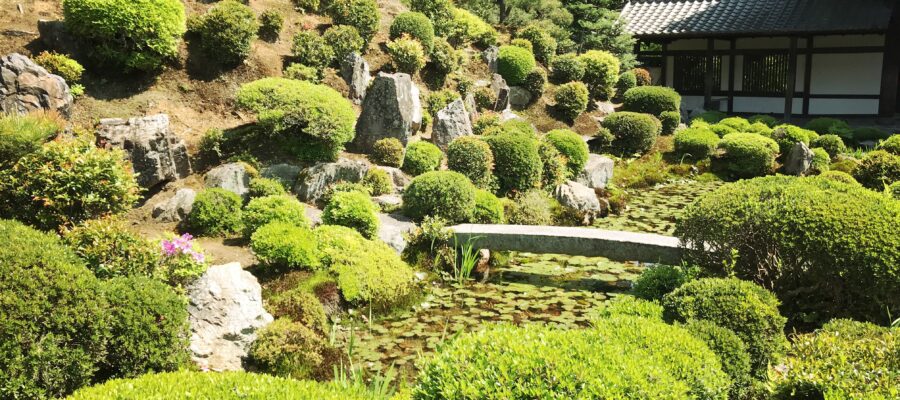三門に登る
折角東福寺まで来ましたので、庭園以外のところも見て回りました。三門も室町時代初期の建造であり、国宝に指定されています。後日、楼上内部に登れる機会があり、上がってみますと、諸仏がずらりと並んでいて、それは圧巻でした。また、門の両横についている木の階段がとても急でありました。
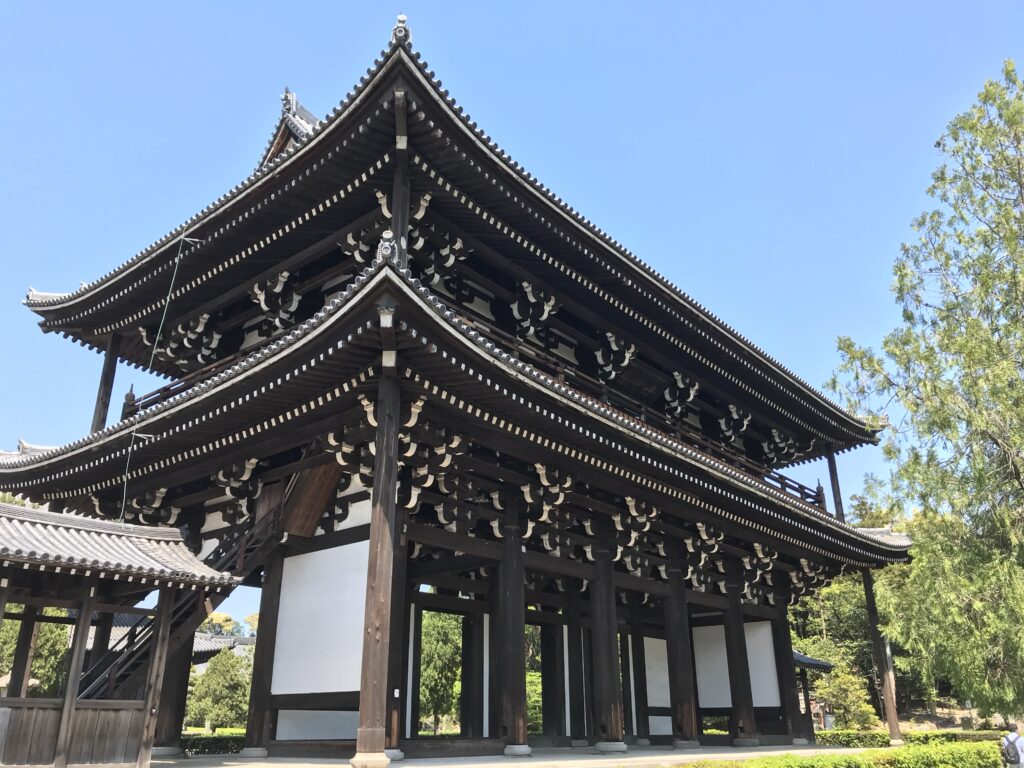
通天橋を渡って開山堂へ
その後、通天橋を通ってさらに奥に行きます。途中、苔むした地面の緑がすごくきれいでした。また、樹々の間からは京都市街も見えます。回廊は何度か曲がりながら開山堂の門まで続きます。季節外れの赤い葉をつけた木の横を通って石段を上がっていきます。
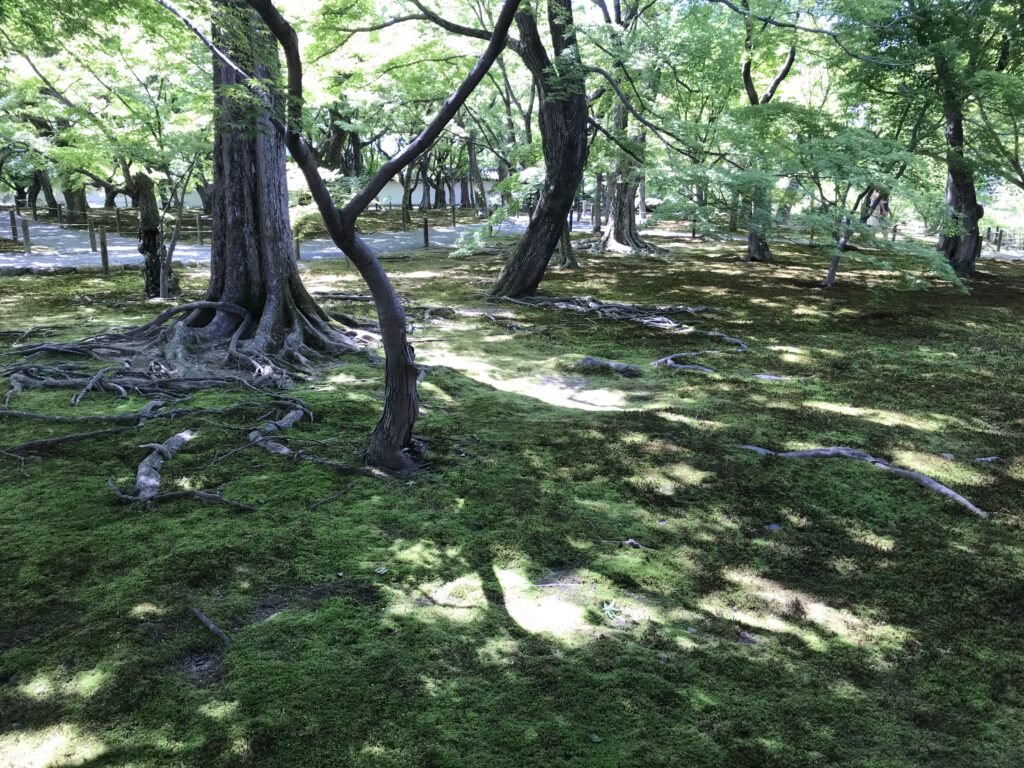
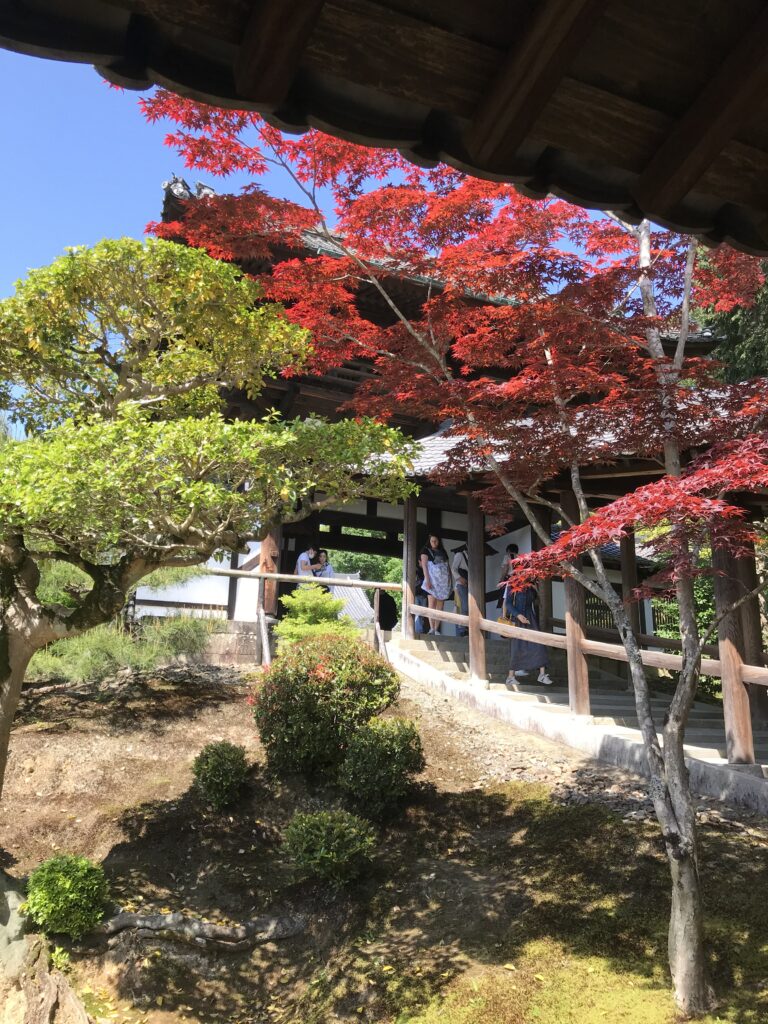
開山堂にも素晴らしい庭
開山堂の前の庭もすごくきれいに整えられています。門をくぐって右側は丸く刈り込んだ低木の緑が池を囲んでいます。先ほどまで見ていた重森三玲さんの庭とは全く異なる雰囲気です。池に架けられた一枚石の石橋が、フォーカルポイントになっていて、そこから緑が広がっていくように見えます。
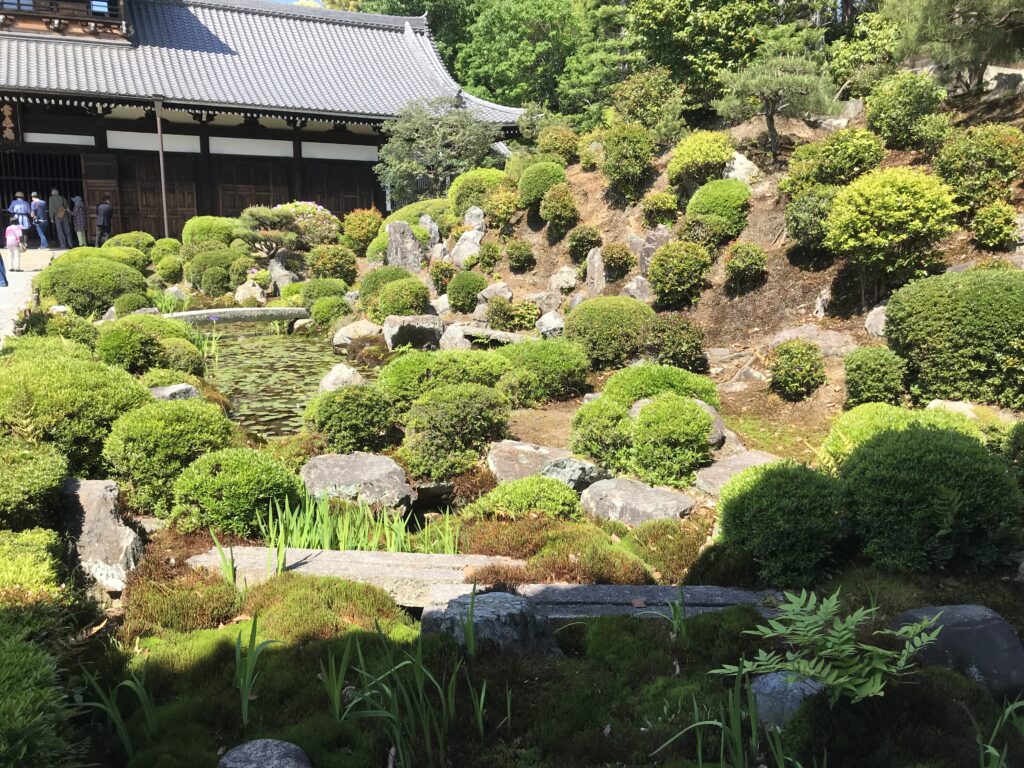
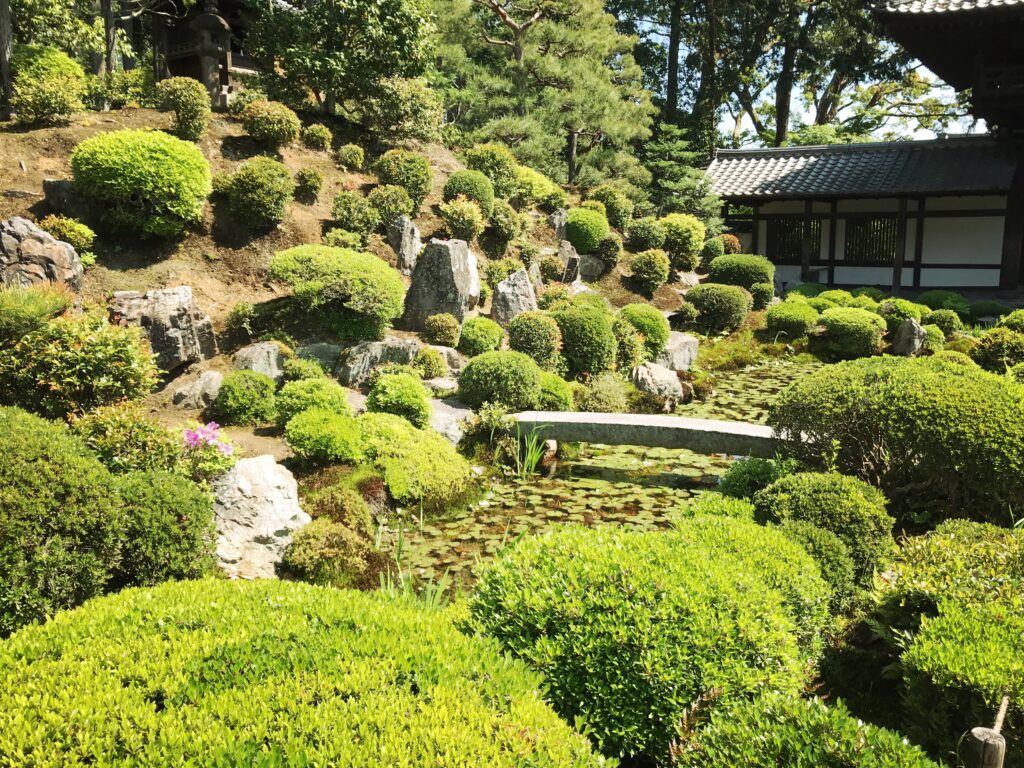
また、左側は白砂のみですが、砂紋に注目してしまいます。縦縞、横縞、無地を縦横に組み合わせたパターンは見ていて心地良いです。何もない白砂のキャンパスに、熊手一本で様々なパターンを生み出していくのは、凄く深遠な芸術のようにも思われます。これが、禅なのかと感心します。
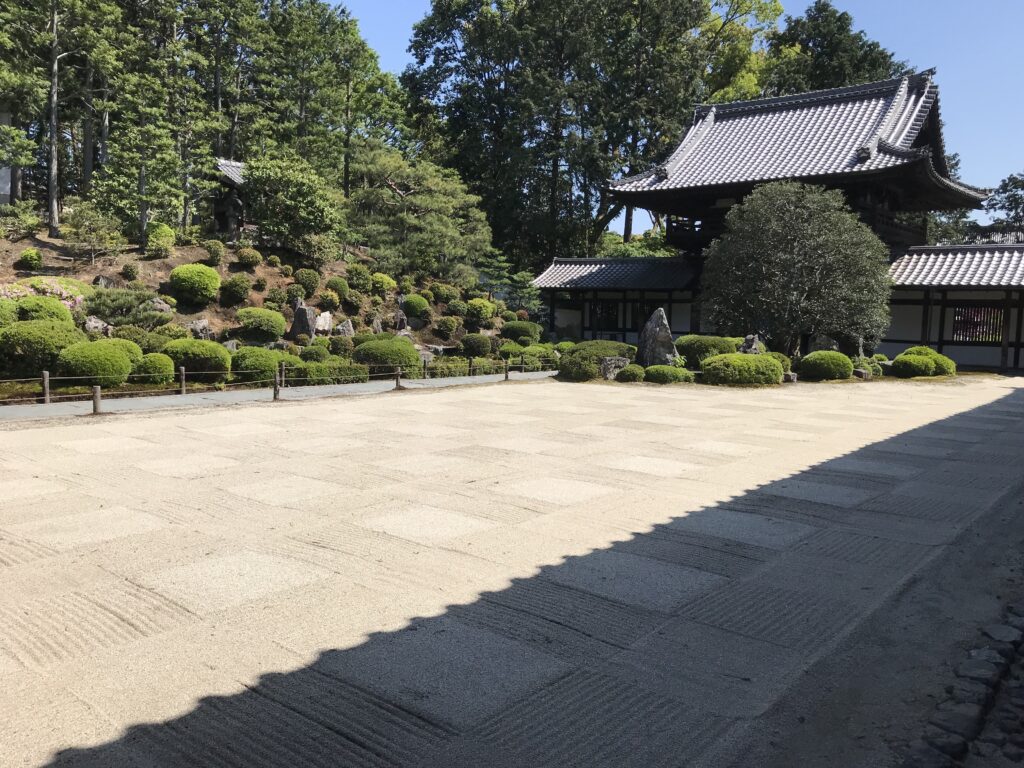
Zenと聞くと、クールな(かっこいい)イメージを持つ海外の方が多いと聞いています。こういう自然の白砂だけで、シンプルですが複雑なパターンを無限に生み出し行くところに、カッコよさを見出していただいているのかもしれません。われわれ日本人が気づかない、クールさを教えてもらおうと思います。(完)
東福寺が紹介されている書籍
烏賀陽百合さんの「しかけに感動する『京都名庭園』」に東福寺の庭が紹介されています。
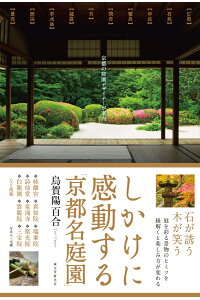
しかけに感動する「京都名庭園」 京都の庭園デザイナーが案内 [ 烏賀陽 百合 ]
価格:1,760円
(2021/5/2 18:44時点)
感想(1件)
Tofukuji Temple ③
Since we had come all the way to Tofukuji Temple, we looked around other places besides the garden. The Sanmon Gate was also built in the early Muromachi Period and is designated as a National Treasure. Later, I had a chance to climb up to the top of the gate, and was impressed by the array of Buddha statues. The wooden stairs on both sides of the gate were very steep.
After that, we passed through the Tsutenkyo Bridge and went further into the temple. On the way, the green moss-covered ground was very beautiful. The city of Kyoto could also be seen through the trees. The corridor continues to the gate of Kaisando-Do (temple) with several turns. Stone steps lead up to the gate, passing by trees with unseasonably red leaves.
The garden in front of the hall is also very beautifully landscaped. On the right side of the gate, rounded and trimmed shrubs surround a pond. The atmosphere is completely different from the garden of Mirei Shigemori that we had just seen. A single stone bridge over the pond is the focal point, from which the greenery seems to spread.
Also, although the left side is only white sand, one cannot help but notice the sand patterns. The pattern of vertical stripes, horizontal stripes, and solid colors combined vertically and horizontally is pleasant to look at. It seems like a profound art form to create various patterns with a single rake on an empty white sand campus. I am impressed that this is Zen.
I hear that many people overseas have a cool image when they hear the word “Zen. Perhaps they find coolness in the fact that we can create simple but complex patterns with only natural white sand in an infinite number of ways. I would like to learn about the coolness that we Japanese do not notice. (End)
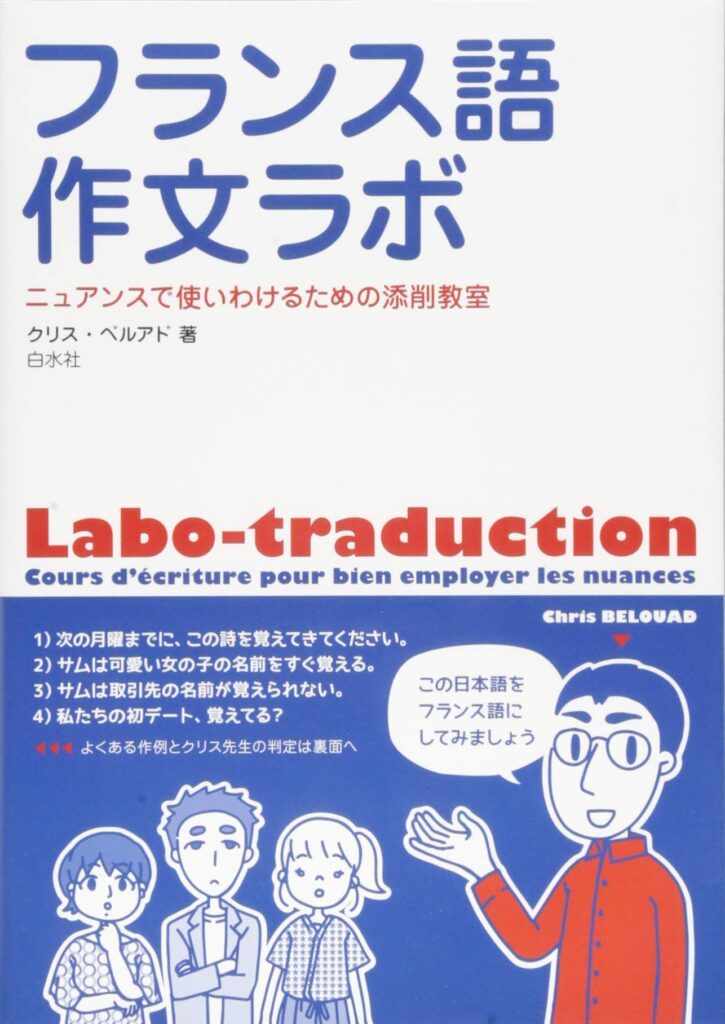
新品価格
¥2,420から
(2022/5/6 23:06時点)
Temple Tofukuji ③
Comme nous avions fait tout le chemin jusqu’au temple Tofukuji, nous avons regardé d’autres endroits que le jardin. La porte Sanmon a également été construite au début de la période Muromachi et est désignée comme un trésor national. Plus tard, j’ai eu l’occasion de monter au sommet de la porte et j’ai été impressionné par l’ensemble des statues de Bouddha. Les escaliers en bois des deux côtés de la porte étaient très raides.
Après cela, nous avons traversé le pont Tsutenkyo et sommes allés plus loin dans le temple. En chemin, le sol vert recouvert de mousse était très beau. On pouvait également voir la ville de Kyoto à travers les arbres. Le couloir continue jusqu’à la porte du Kaisando-Do (temple) avec plusieurs virages. Des marches en pierre mènent à la porte, en passant par des arbres aux feuilles rougeâtres pour la saison.
Le jardin devant le hall est également très joliment aménagé. Sur le côté droit de la porte, des arbustes arrondis et taillés entourent un étang. L’atmosphère est complètement différente du jardin de Mirei Shigemori que nous venions de voir. Un seul pont de pierre au-dessus de l’étang est le point focal, à partir duquel la verdure semble s’étendre.
De plus, bien que le côté gauche ne soit que du sable blanc, on ne peut s’empêcher de remarquer les motifs du sable. Le motif des rayures verticales, des rayures horizontales et des couleurs unies combinées verticalement et horizontalement est agréable à regarder. Créer des motifs variés avec un seul râteau sur un campus vide de sable blanc semble être une forme d’art profond. Je suis impressionné par le fait que ce soit le Zen.
J’ai entendu dire que beaucoup de gens à l’étranger ont une image cool quand ils entendent le mot “Zen”. Peut-être trouvent-ils cool le fait que nous puissions créer des motifs simples mais complexes avec du sable blanc naturel, et ce, de manière infinie. J’aimerais en savoir plus sur les aspects cool que les Japonais ne remarquent pas. (Fin)
